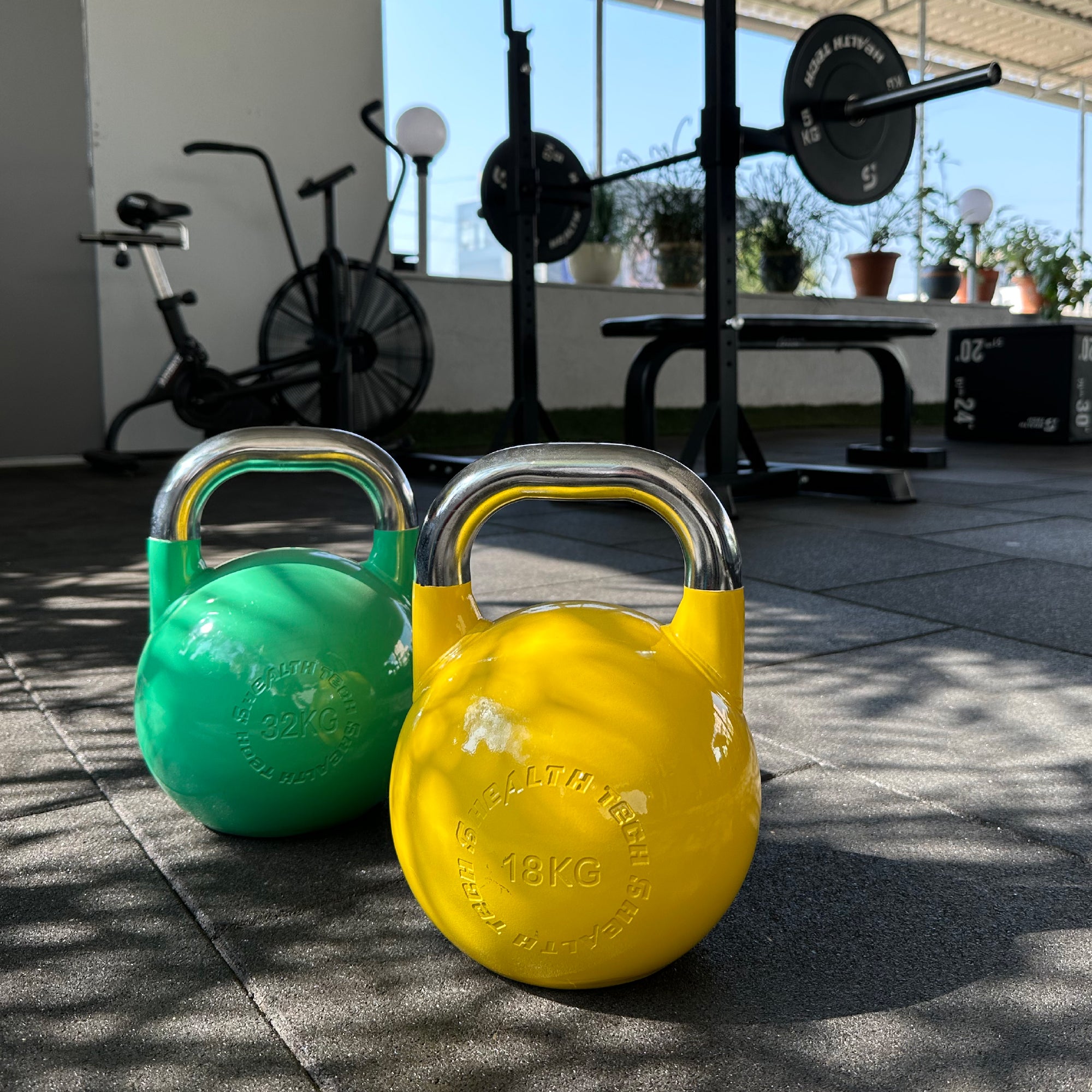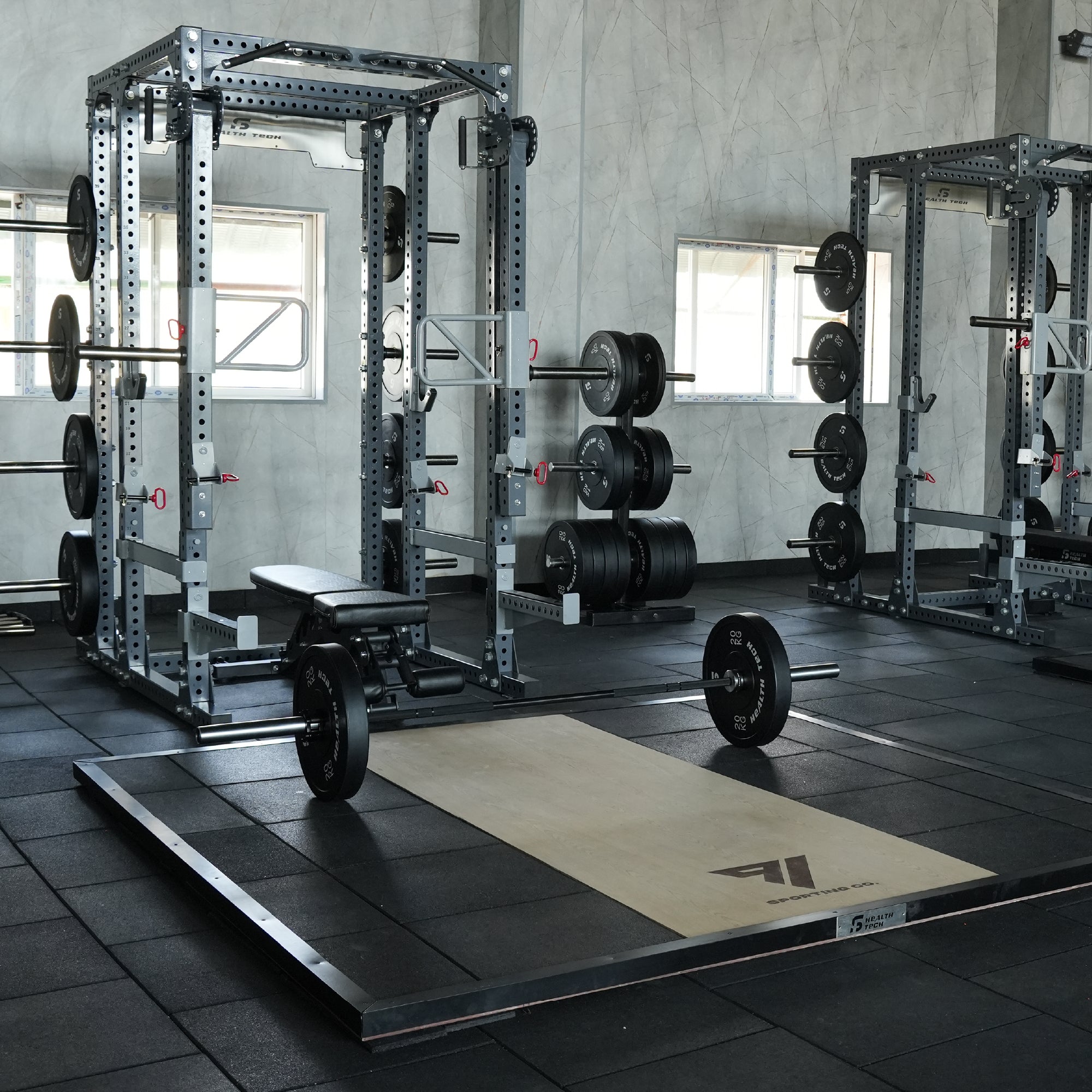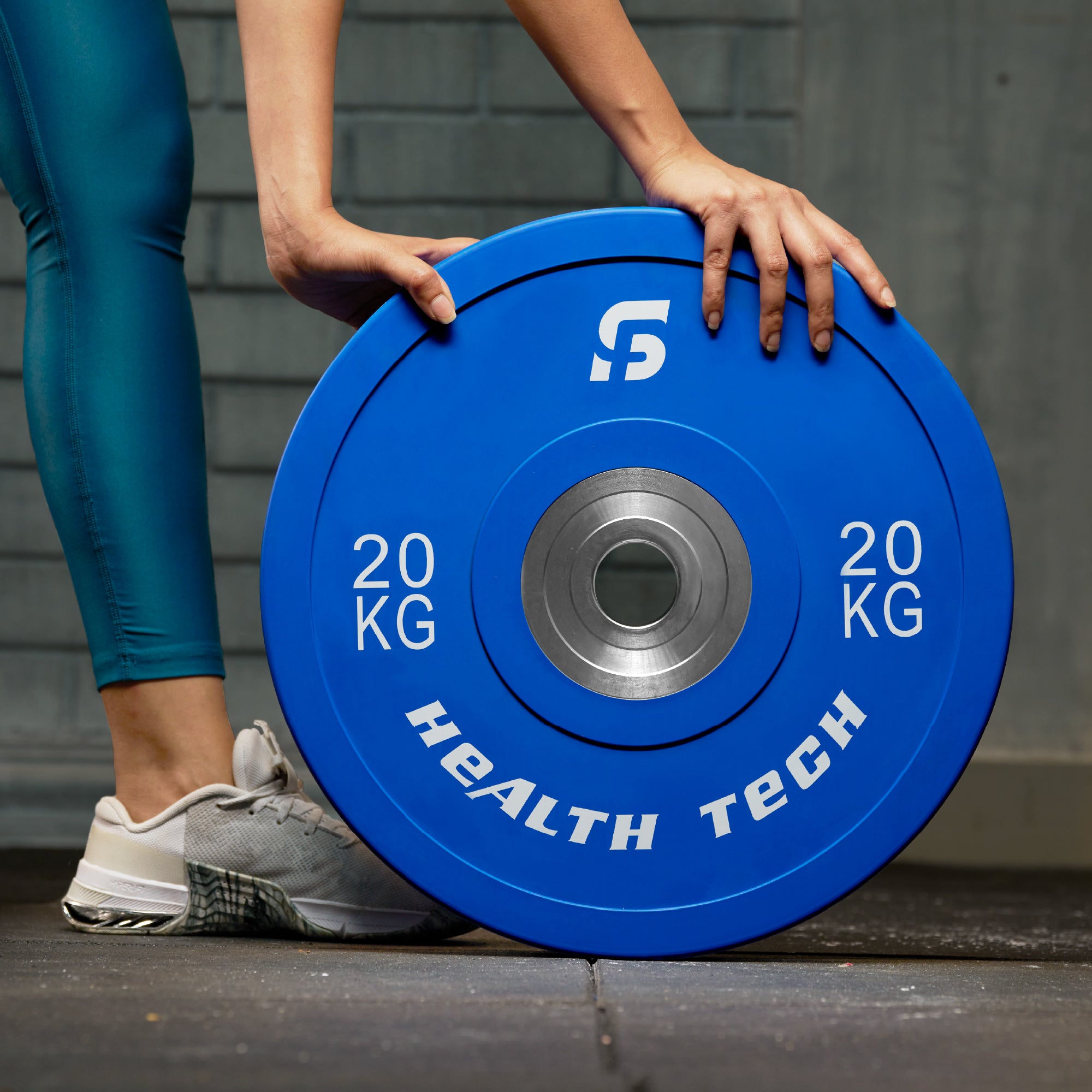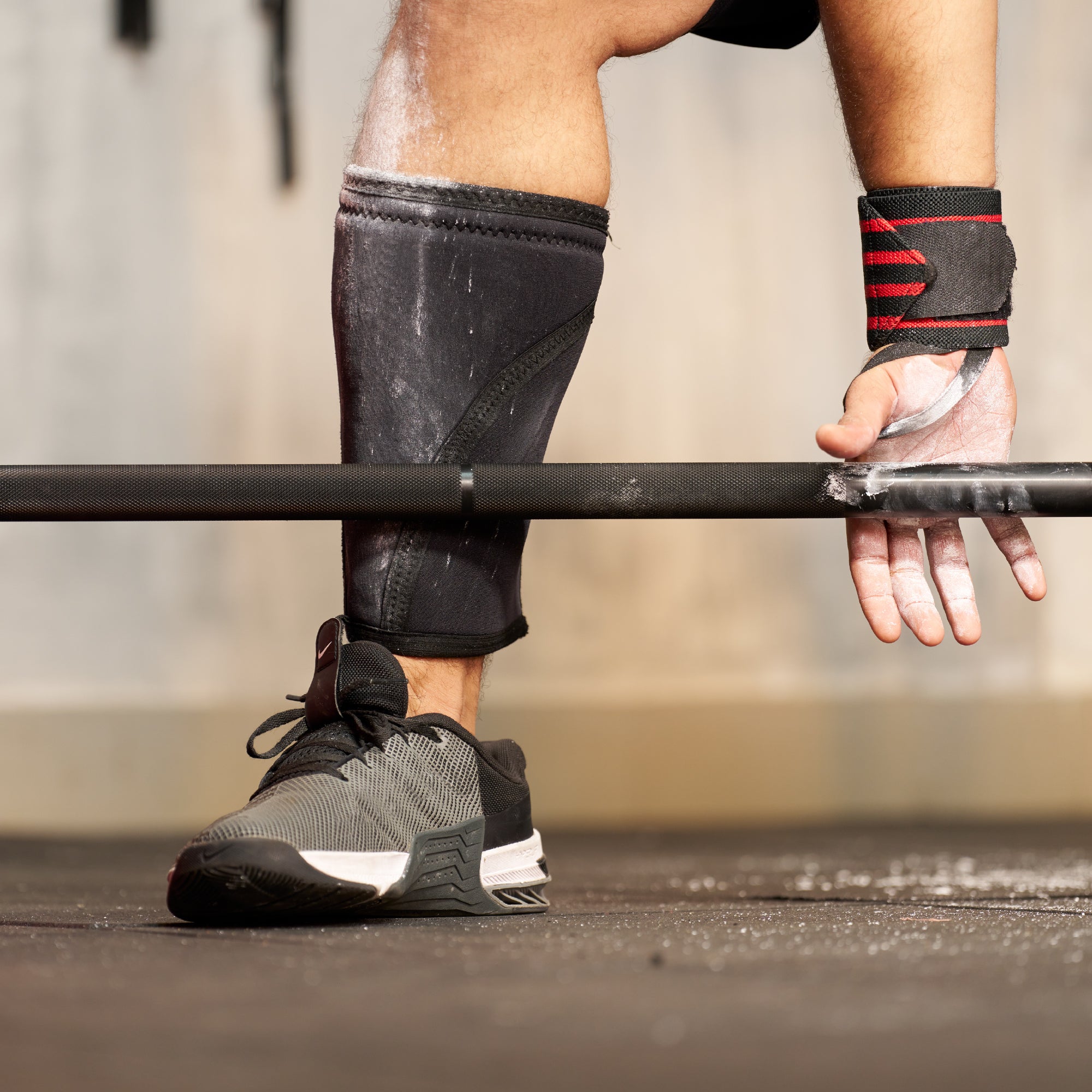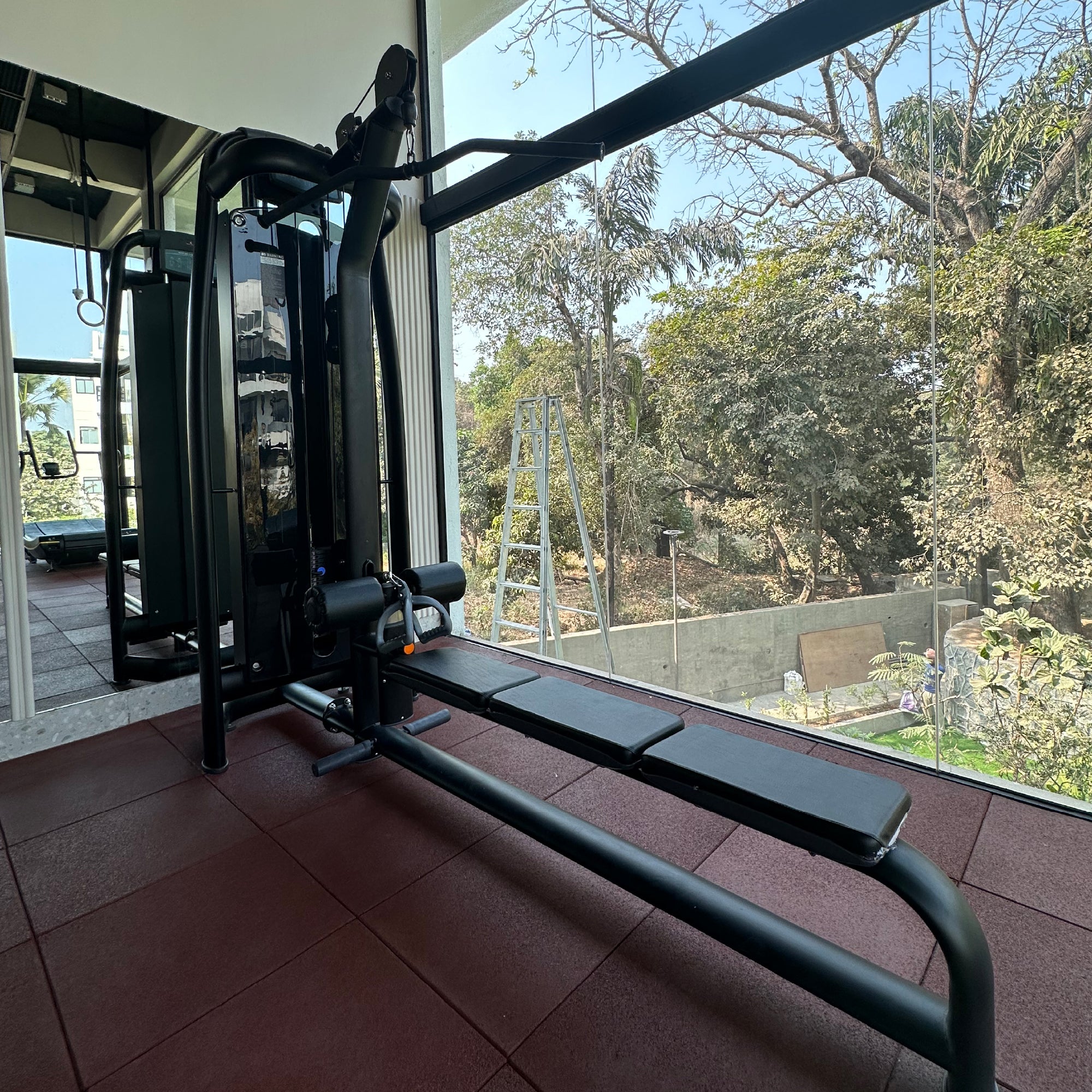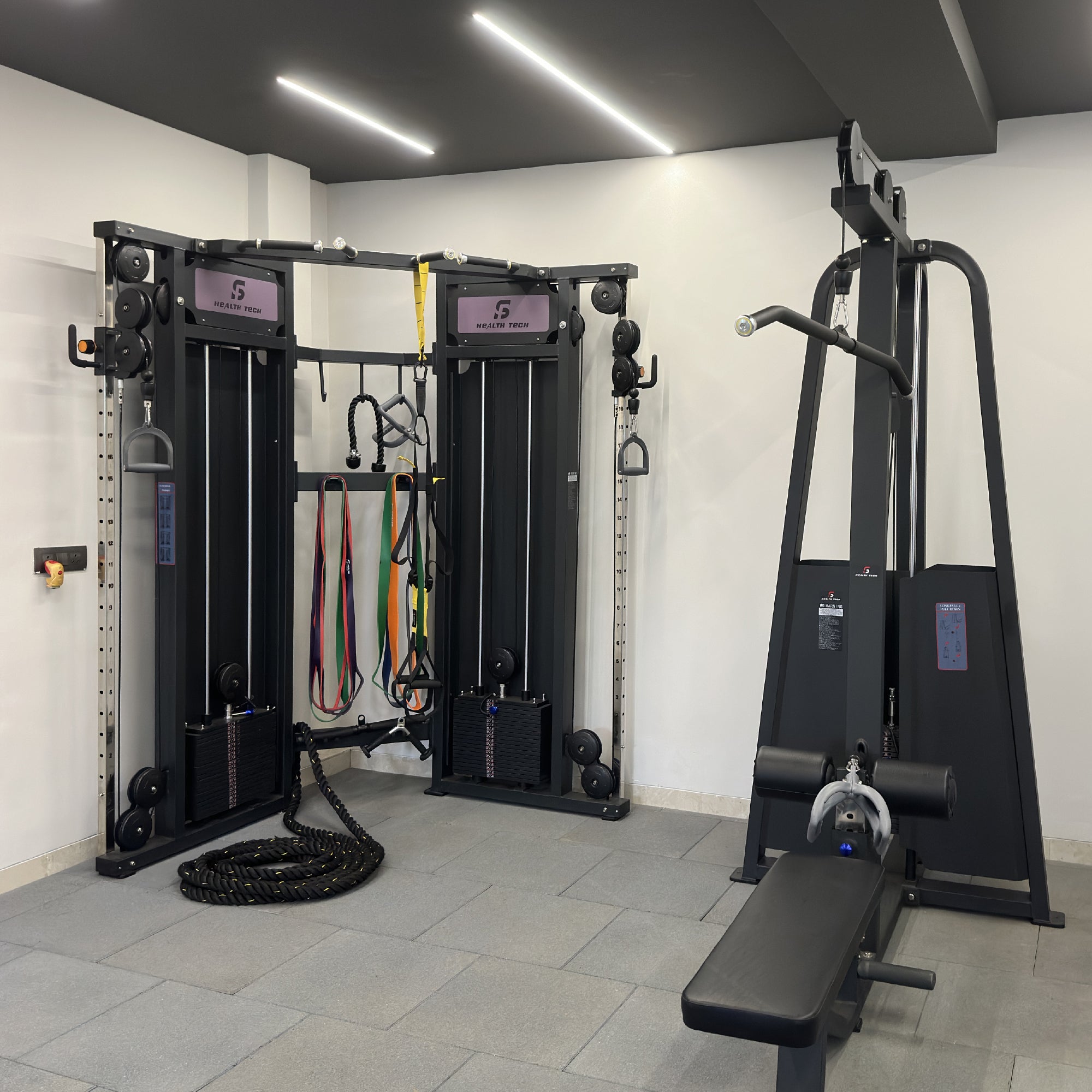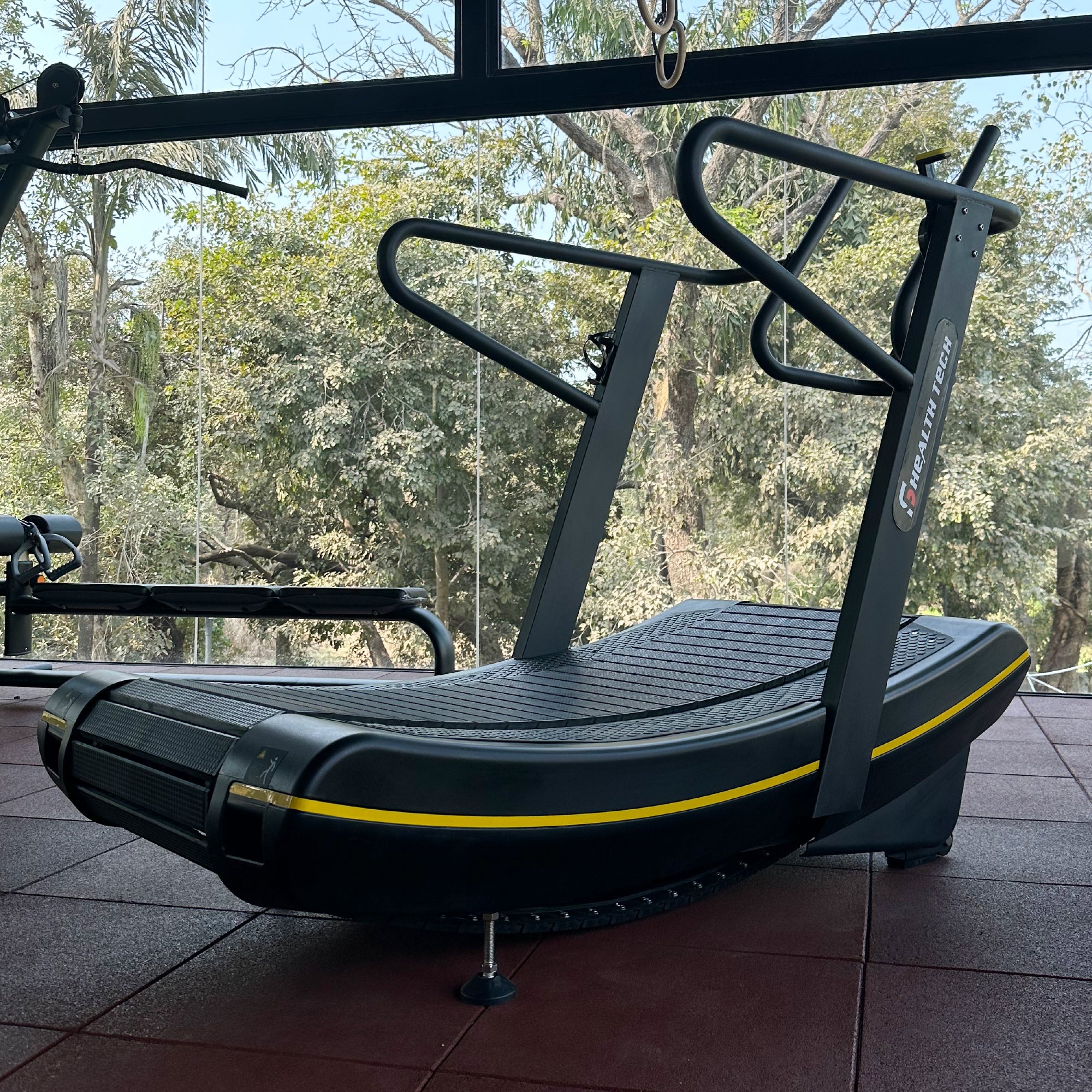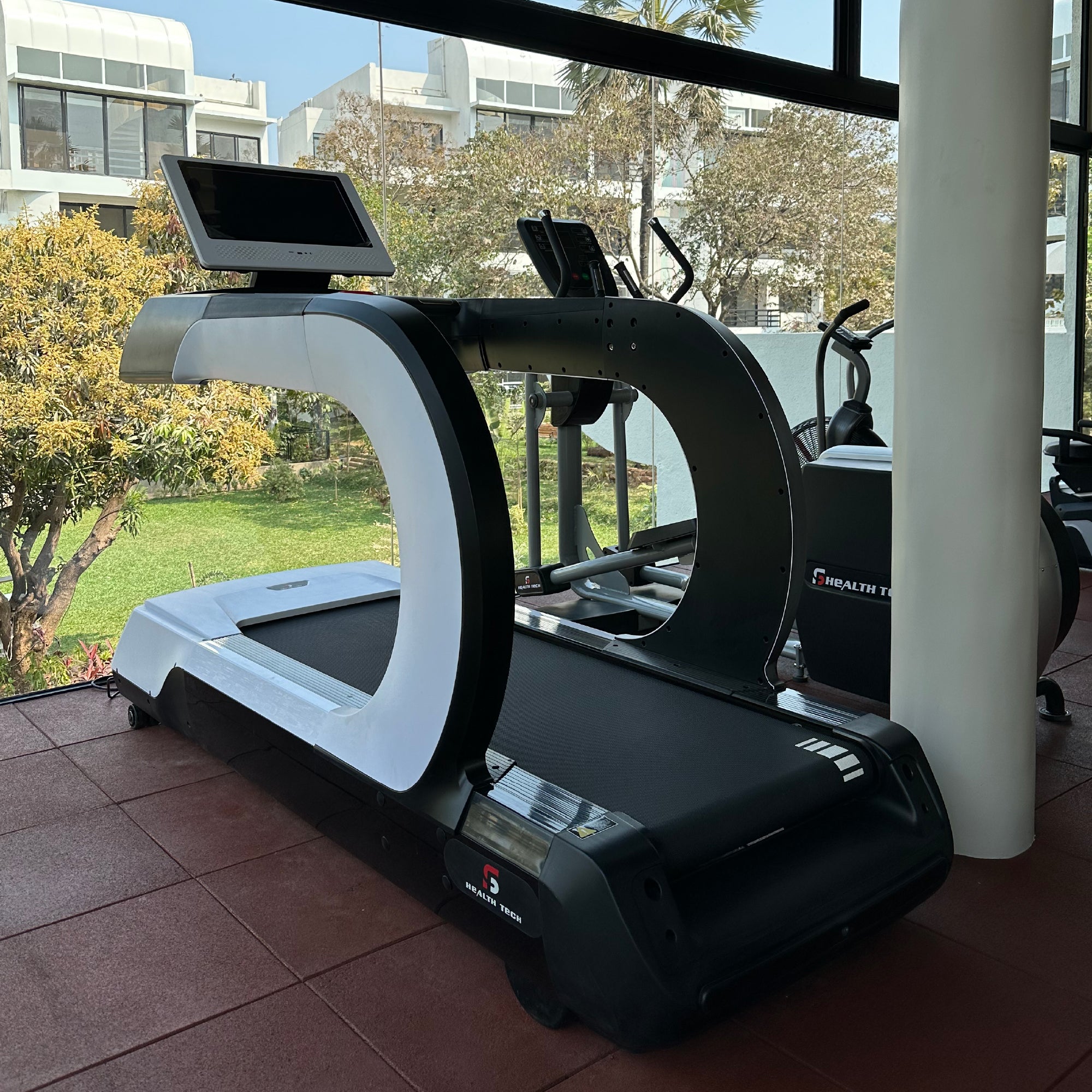Powerlifting vs Weightlifting: A Beginner's Guide to Choosing the Right Training Style
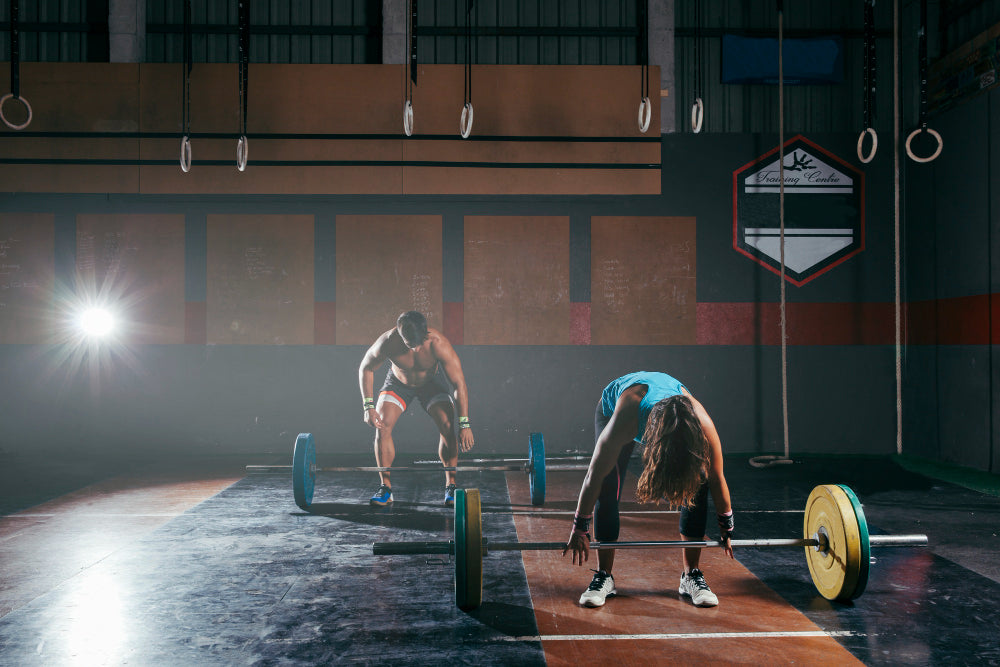
People have always been interested in who's the strongest. Throughout history, from simple rock-lifting contests to the Olympics, there have been ways to measure and compare strength. Strength training itself has become organized and categorized into different fields.
Two popular options for building strength are powerlifting and weightlifting. You might have heard these terms before, and it's common to get them confused. Maybe you're even curious about trying one (or both) yourself!
What Is Powerlifting?
Powerlifting is a strength competition where athletes aim to lift the maximum weight in a single attempt. Participants are categorized by gender, weight, and sometimes age. Each athlete performs three attempts at three different lifts: the squat, bench press, and deadlift. The highest weight lifted in each lift is combined to calculate the total score. Several powerlifting organizations exist globally, with the International Powerlifting Federation (IPF) being a prominent one. USA Powerlifting (USAPL) operates under the IPF.
4 Basics of Powerlifting
Powerlifting is all about testing your overall strength. While the main lifts might seem straightforward, there are a few key things to keep in mind as you begin your training:
- Full Body Coordination: Powerlifting involves using as many muscles as possible during each lift, not just one or two. Focus on coordinating your movements to get the most power out of your entire body.
- Range of Motion: Lifting with a shorter range of motion might seem easier, but it doesn't build as much overall strength. Powerlifters often use techniques like the bench press arch or sumo deadlift stance, but these should maintain a safe and controlled range of motion.
- Raw vs Equipped Lifting: Most beginners start with "raw" powerlifting, which uses minimal equipment like knee sleeves, a belt, and wrist wraps. There's also "equipped" powerlifting, where advanced lifters wear supportive suits that can significantly increase the weight they can lift.
- Safety First: Because powerlifting involves heavy weights, safety is crucial. Always prioritize proper form, like keeping your back straight during deadlifts, controlling the weight during bench press, and maintaining a good squat position.
Who Should Consider Powerlifting?
Powerlifting might be a great fit if you're motivated by building raw strength and enjoy focusing on a few core lifts. It appeals to people who find satisfaction in gradually increasing the weight they can lift and take pride in perfecting their technique. The good news is that powerlifting is open to everyone, regardless of your size or experience. Competitions have weight classes to keep things fair.
Powerlifting is also a pretty accessible sport. Most gyms have the basic equipment you need: a barbell, weights, and a power rack. This means anyone who's determined and willing to work hard can give powerlifting a try, making it a welcoming and rewarding activity.
What Is Weightlifting?
Weightlifting is a competitive sport that tests an athlete's strength and power. It uses barbells and is the only weightlifting event in the Olympics. You might also hear it called Olympic-style weightlifting, or simply Olympic lifting.
There are 2 main lifts in competition: the snatch and the clean and jerk. Weightlifters need more than just strength - they also need to be coordinated, flexible, balanced, and quick.
Competitions divide weightlifters by gender and weight. Athletes get three tries at each lift, and their final score combines their best snatch and best clean and jerk.
To get credit for a lift, it needs to be done correctly. This means good control of the barbell, keeping it steady, and waiting for the referee's signal before lowering it. If the lift isn't done properly, the referee will say "no lift" and it won't count. If a lifter misses all their attempts in either snatch or clean and jerk, they score a zero, which is sometimes called "bombing out."
2 Fundamental Olympic Lifts
These lifting exercises involve specific techniques and require both flexibility and good coordination. Learning the proper form and starting with lighter weights can help you avoid injuries and any frustration that might come with trying to do too much too soon.
- Snatch: This lift is considered more difficult. The athlete lifts the barbell from the ground all the way up overhead in one smooth motion, keeping their arms straight and locked when holding the weight overhead. To do this, they first use their legs and hips to lift the weight, then quickly dip under the bar as it reaches their chest. Once the weight is lifted and controlled, they stand up straight.
- Clean and Jerk: This is a two-part lift where the barbell starts on the floor. The athlete uses their legs to pull the weight up to their shoulders in one swift movement, then lowers themselves into a squat to receive the weight (the "clean"). The second part involves raising the bar overhead with straight, locked arms (the "jerk"). To do this, the athlete dips slightly with the bar on their shoulders, then forcefully pushes the weight up, catching it with their feet in a balanced position (either one foot forward or both feet out to the side). Once stable, they bring their feet together to finish the lift.
Who is a Suitable Candidate for Weightlifting?
Weightlifting involves a mix of strength, balance, and coordination. The lifts themselves can be tricky to learn and require good technique. If you enjoy figuring out new movements and want to build explosive power, you might like weightlifting. It's a sport where you need to be both precise and athletic, especially for lifts like the snatch and clean & jerk.
Since weightlifting uses special equipment and has technical lifts, it's a good idea to find a gym with weightlifting facilities and a coach to help you learn the proper form. Weightlifting isn't just about building muscles, it can also improve your flexibility, coordination, and even your mental focus. If you're looking for a rewarding and challenging activity that involves mastering technical skills, weightlifting could be a great option for you.
Weightlifting vs Powerlifting: What’s The Difference
Powerlifting and weightlifting, while different in their details, share a core focus on building strength. Both require athletes to train hard, understand proper lifting techniques, and constantly strive to improve.
At the heart of both sports is lifting weights in competitions and pushing your physical limits. This shared challenge creates a sense of community and support among athletes in both sports. No matter which sport they choose, both powerlifters and weightlifters develop discipline, mental strength, and the ability to bounce back from challenges.
Key Difference Between Powerlifting and Weightlifting
While powerlifting and weightlifting might seem alike at first glance, they actually have some major differences in how they're done and what's most important. Powerlifting is all about lifting the heaviest weights possible in three specific lifts: the squat, bench press, and deadlift. Weightlifting, on the other hand, is more about speed, flexibility, and technique, with athletes lifting weights overhead in very specific ways.
Because of the different goals of each sport, the training is different too. Powerlifters focus on building raw strength and getting their form perfect in the squat, bench press, and deadlift. Weightlifters work more on building explosive power and doing the snatch and clean & jerk lifts with perfect technique. These different goals lead to different training methods, competition strategies, and even the kind of physiques that are best for each sport. In
What Equipment Do You Need to Start Powerlifting
Powerlifting might be a good option for you if you're looking to build strength and potentially compete in strength competitions. It's a relatively straightforward workout style that can be done in most gyms, and the strength you gain will benefit you in other aspects of life.
To get started with a powerlifting program, you'll need some basic equipment:
- A barbell (around 20 kg or 45 pounds) that's long enough for you to squat comfortably.
- Weight plates that fit the barbell.
- A squat rack or power rack to safely hold the barbell while squatting.
- A bench press station for chest presses.
While this is a good starting point, many powerlifting programs also incorporate other exercises. Resistance bands, cables, bumper plates (special plates for deadlifts), and even weight machines can all be helpful additions to your routine.
What Equipment Do You Need to Start Weightlifting
Weightlifting might be an Olympic sport, but it's also an activity that beginners can enjoy. Let's break down the essentials you'll need to get started. While the equipment itself is fairly simple, finding a place to train can be a bit trickier.
-
Here's what you'll want to have on hand:
- A Barbell: There are different gym barbells for men and women. Men typically use a 20-kilogram barbell, while women's barbells are shorter and lighter at 15 kilograms.
- Bumper Plates: Unlike regular weight plates, weightlifters often drop the barbell from overhead. That's why rubberized bumper plates are a must for safety.
- Weightlifting Shoes: These shoes are designed to improve your performance in specific weightlifting movements like the snatch and clean & jerk.
- Finding a Place to Train: The biggest hurdle for new weightlifters might be finding a suitable training space. Many people find success in CrossFit gyms, as these facilities often have all the necessary equipment for Olympic weightlifting movements.
-
Additional Equipment: While not essential, other free weights, cable machines, or weight machines can be helpful for exercises that complement your weightlifting routine.
Overall, weightlifting requires minimal equipment, but finding a training space might require some searching.
Frequently Asked Questions (FAQs)
-
Are powerlifting and weightlifting the same thing?
Not exactly. While both use barbells and help build strength, they have different goals and movements. Powerlifting focuses on lifting the most weight possible in three lifts: bench press, squat and deadlift. Weightlifting focuses on lifting weights quickly and with proper technique in two lifts: the snatch and clean and jerk.
-
Can I train for both at once?
You can, but there are some things to consider. It's generally easier to make faster progress by focusing on one sport at a time. Each requires specific training methods that might interfere with the other if done together.
-
Which is better for building muscle?
Both are great for building muscle, but they target different areas. Powerlifting builds strength in your legs, core, and pushing muscles (chest, shoulders, triceps). Weightlifting builds overall muscle and explosiveness, with a strong focus on leg power.
-
Which is better for beginners?
Powerlifting might be a bit easier to learn at first. The movements are generally simpler. However, both can be good for beginners with a coach to teach proper technique and keep things safe.
-
Can I participate if I'm older or have injuries?
Sure! Both sports can be adapted for different ages and fitness levels. It's important to talk to a doctor and a qualified coach to make sure any exercises are adjusted for injuries or limitations.
-
Which helps more with losing fat?
Both can be great for fat loss! The key is to combine them with a healthy diet and other exercises like cardio. Ultimately, the best choice depends on what you enjoy more, since consistency is important.
-
What equipment do I need?
Each sport needs specific gear. Powerlifting needs a squat rack, bench, barbell, and standard weight plates. Weightlifting needs a proper location, bumper plates, and a specialized barbell with wider grips. Both sports benefit from supportive gear like weightlifting shoes and belts.
-
How long does it take to see results?
It depends on several factors, like your genes, how long you've been training, and how often you train. You might see some strength gains within a few weeks, but bigger muscle and body changes take months of dedicated training.
-
How often should I train?
Training frequency depends on your experience and goals. Powerlifters typically train 3-5 days per week, focusing on heavier weights and fewer repetitions. Weightlifters may train 3-6 days per week with a mix of weightlifting movements and other exercises to improve technique and overall strength.
-
Can I compete without experience?
There are beginner competitions for both sports! However, working with a coach beforehand is a good idea. They can help you learn proper technique and plan your training to make competing safe and fun.


